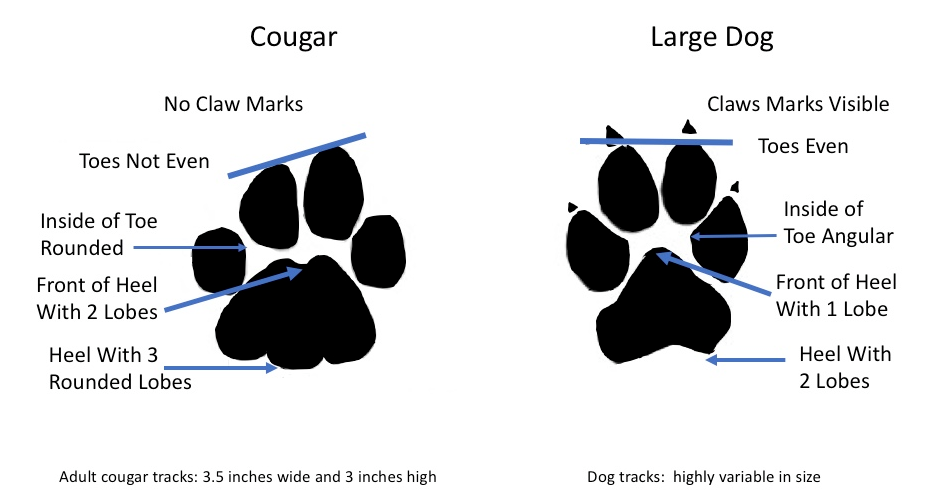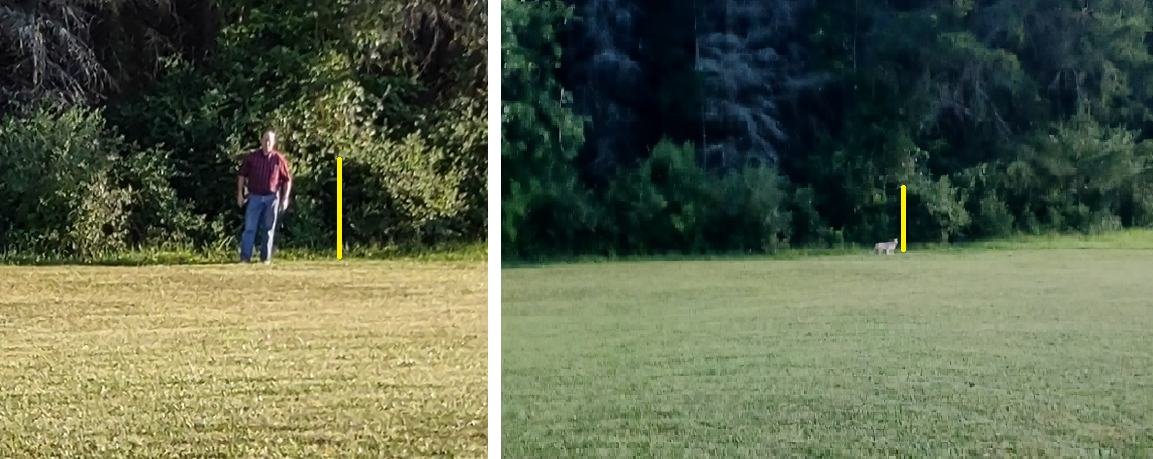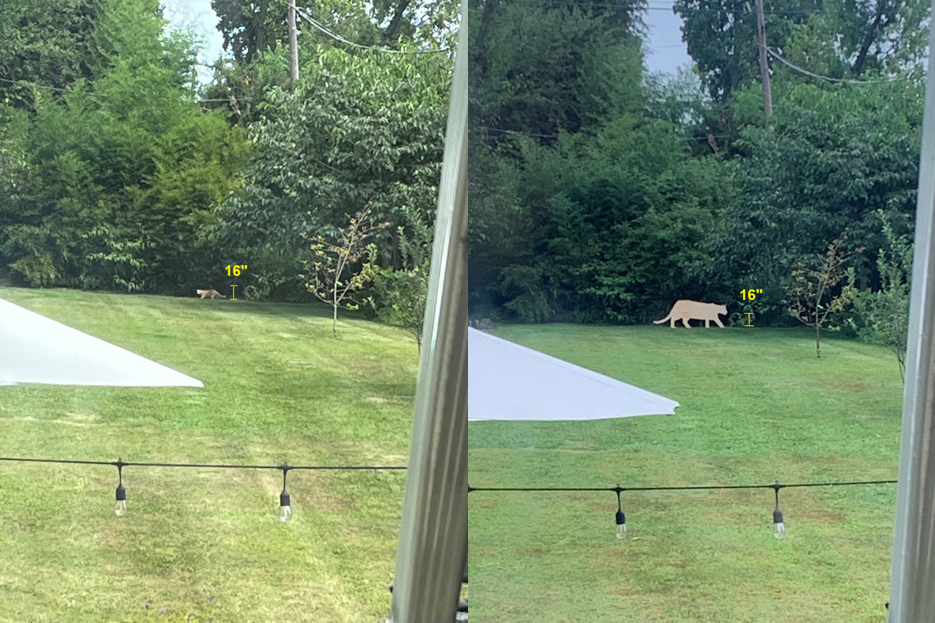Are
There Mountain Lions in Pennsylvania?
Photo caption:
The mountain lion (Felis concolor) was once a common native species to Pennsylvania but was extirpated by the turn of the 20th century due to persecution and habitat loss. Shutterstock
This question is one residents of the Keystone State often ask, while others have a ready answer for. The mountain lion has been known by many names within the state’s history, including the cougar, puma, and catamount. Few animals are as shrouded in mystery or elicit so much conjecture about their presence throughout the Commonwealth. And the answer to the question is not a straightforward one.
History of Lions in Pennsylvania
Prior to European settlement, Pennsylvania was home to a large variety of species, a few of which no longer roam the wilds of the state. Indigenous peoples lived alongside black bears, elk, white-tailed deer, gray wolves, and even mountain lions. The Lenape referred to this species as the Kwèn’shùkwënay, and many Indigenous societies of the east associated the mountain lion as a clan animal or a species representing nobility or hunting prowess.
Early European explorers described lions along their travels into the vast forests of Pennsylvania. Early settlers who pushed into the “wilderness” areas along the Susquehanna River branches pursued lions with hounds while at the same time staying wary of them while hunting for elk and deer. Philip Tome, an early settler along the West Branch described in his journals, which were published as
Thirty Years a Hunter, an encounter with a pair of lions after taking shelter under a rock overhang:
"About nine o’clock two panthers made their appearance, and finding what was perhaps their usual quarters invaded, they set up a screaming that would have sent the blood to the stoutest heart. I took my gun in one hand, my tomahawk in the other, while my dog stood near me, and I resolved, if they should attack me, to give them a warm reception. They kept up their fearful serenade until midnight, when they withdrew, and I heard no more of them.”
As settlement spread across Pennsylvania, from Philadelphia to Erie, the great mixed forests of the state were felled for timber, and a transition from forestland to agricultural lands began. With the increase in agriculture, large predators became a concern for livestock. Mountain lions and wolves became public enemy number one and were hunted until none remained. Although records vary, the last mountain lion was likely killed in the 1870s. ushering out an era of the wolf and lion as the top predators.
Domestic Mountain Lions
As with many other species of wildlife, humans have brought mountain lions into captivity over time and even began breeding captive animals. Mountain lions have been bred in captivity quite successfully, and many zoos and menageries throughout the nation contain a mountain lion or two. As a young boy in southcentral Pennsylvania, I can remember my father taking us to a little nearby town where, from a back alley, you could see a mountain lion in a cage in someone’s backyard.
Even now in Pennsylvania, residents can apply for a permit to keep a captive domestic mountain lion, although there are many restrictions. Like many other captive animals, sometimes they get out. This happened in 1960 when two mountain lions escaped from the Nay Aug Park in Scranton. Sometimes these big cats have been liberated by owners who can’t care for them anymore or who didn’t anticipate that a 10-pound kitten would grow into a 160-pound adult.
The Connecticut Cat
In 2011, a Connecticut resident took a picture through their screen door of a mountain lion walking through their front yard. The camera focused on the screen, resulting in a blurry, unclear photo of something brown in the background. Authorities couldn’t tell exactly what it was, but a week later, a dead lion lay along the side of the road after being struck by a car. It was taken to a Department of Energy and Environmental Protection office for a closer look. With no signs of domestication, it was determined to be a wild lion. But where could it have come from? The closest breeding populations were in Florida in the everglades or in South Dakota and Nebraska. After genetic testing, it was determined this was a young male from the South Dakota population. It had dispersed from its natal territory and headed east in search of a female. Unfortunately for this cat, there were no other lions to the east and it kept moving nearly to the Atlantic before being struck.
How could this animal have made it across the country, traveling over 1,500 miles, without leaving any sign? Lions are often considered ghosts, but they do leave evidence when they move through, and this one was no different. As biologists looked back over the months ahead of its untimely death, they were able to piece together a bread crumb trail of sign. Trail cameras, hair samples, and blood samples collected in Minnesota, Michigan, Canada, and New York told the story of how this cat made the monumental journey across the continent.
Hundreds of Sightings
Each year in Pennsylvania, we receive literally hundreds of reports of mountain lion sightings. Residents report seeing one themselves, having a friend, neighbor, or loved one who claims to have seen one, or have evidence such as a photo, video, track, or scat. Sometimes these sightings even make the news, which then causes panic within neighborhoods with residents keeping pets and children indoors.

Photo caption: Tracks in the snow or mud are often submitted as evidence of a mountain lion, but they’re most commonly dog tracks mistaken for lion tracks.
Illinois Department of Natural Resources
So how do we know whether there is credibility to these sightings? From a biologist perspective, the first and most important aspect is evidence. Looking at the Connecticut example, we know that even a single lion traveling a long distance leaves plenty of evidence. So, we begin by asking residents if they have any evidence that can help determine what they saw. Clear photos or video are the most helpful evidence, but prints, hair, or scat can also help. Without evidence, there’s nothing to substantiate a claim.
The Problem of Scale
Once a sighting is reported with some sort of evidence, we evaluate that evidence to determine what animal may be in question. Of all the sightings we’ve received over the years, we have not been successful in confirming the presence of wild mountain lions in Pennsylvania.
How can that be possible with so many sightings? In part, there are several animals in the state that are misidentified most frequently. The bobcat is a resident of Pennsylvania and can sometimes be confused for a lion. The coyote, with its long, sloping tail can sometimes resemble a lion. Even white-tailed deer with their sometimes-tawny brown coat are called mountain lions.
As hard as it might be to believe, the number one animal in the state often pointed to as a mountain lion is the house cat. A tan house cat is, in fact, a miniature of a mountain lion. How could someone possibly confuse the two, when one is 7 pounds, while the other averages 150 pounds? It’s a matter of scale.

Photo caption: Scale is important when evaluating a sighting. The man (left) stands in the same location as the animal in the original photo (right). Using the unique shape of the autumn olive bush to develop a point of scale, it’s easy to see this was a house cat.
When we receive a photo, it’s generally from a trail camera or someone zooming in with a cell phone to snap a picture. A biologist first examines the animal in question to determine a general sense of the species. Bobcats have a bobbed tail, a dished, wide face, spotting as well as striping on the inside of the legs, and white highlights on the leading edge of the ears. Coyotes will have a long, pointed snout with a bushy tail and long, pointed ears that are erect. Deer also have an elongated nose and very large ears, with a short tail generally held tight to the body. If the animal still appears to resemble a mountain lion, biologists begin looking elsewhere in the photo to find scale or something that provides an idea of overall height or length. Often, a plant species or manmade object can help determine how large the animal actually is.
In cases where scale is unknown, biologists will work with the individual reporting the sighting to take some measurements, take a photo of themselves in the same location from the same perspective, or something similar. In rare cases, they will visit the site with special tools that can help make a determination. Staff have created life-size, anatomically correct cutouts of a mountain lion, a bobcat, and a house cat. By staking these at the location of the sighting and then taking a photo from the same location and perspective as the original photo, we can often clearly see the difference in scale.
A
Scare in York County
Recently, a pair of mountain lions were reported in a suburb of York, Pennsylvania. I first contacted the local game warden as well as the resident who reported the sighting. By this time, the local law enforcement agency had issued a warning to residents, which then was picked up by news agencies throughout the state and beyond.
When I arrived on site, several neighbors warily peeked through their windows or came out to see if we were there to “get the mountain lions.” I let them know we were there to determine what the animals might actually be first. We met with the landowner to get permission to examine the location where the animal in question had stood and then asked if we could recreate some of the photos. The warden took the photos from the same kitchen window with the same perspective and zoom while I placed the different cutouts in the location where the animal was observed. We then reviewed the original photo with the cutout photos and were quickly able to determine it was not a mountain lion but a domestic house cat. The resident provided permission to use the original photos, and we then contacted both the police as well as the many news outlets that had reported on the situation.

Photo caption: After further investigation, a York County sighting that caused panic in the neighborhood (left), turned out to be a house cat following measurements of vegetation and using anatomically correct cutouts for comparison (right).
J. Ritter
When situations like this arise where an unsubstantiated sighting is reported to local authorities without training in identifying wild animals, issues can arise quickly.
Following our visit to this location, we let neighbors know it was not a mountain lion. They were relieved and related that they had been driving their kids to school instead of the bus and not allowing their pets to go outside. This unnecessary panic and hysteria can cripple a neighborhood and highlights the importance of contacting the Pennsylvania Game Commission, the state’s wildlife agency, first to make a determination before issuing a media release.
The Questions at Hand
With all this information provided, we still haven’t clearly answered some of these questions:
Do we have mountain lions in Pennsylvania? We do not have a breeding population of wild mountain lions within the state any longer, but we do have residents that are permitted to keep mountain lions in captivity.
Is there a possibility that someone could spot one in the wild? Based on the cat that walked from South Dakota to Connecticut, there is a possibility, although it would be an extremely low probability.
-
Could a captive mountain lion escape or be set free within the state? It certainly could, although this is also a very rare occurrence.
-
Why do we have so many reported sightings in Pennsylvania?
Mountain lions continue to capture the imagination of Pennsylvanians throughout the state, and many people would like to catch a glimpse of one. There are also other species that can look similar to a mountain lion, and house cats are the number one species most confused for a lion.
-
How can we be sure there aren’t any mountain lions in Pennsylvania? Like any animal, mountain lions leave tangible evidence of their presence. The journey of the Connecticut cat was well-documented across the northern U.S. and Canada. Pennsylvania at any time has hundreds of thousands of trail cameras, CCTV cameras, and doorbell cameras constantly recording. The state has the 11th most roads per person and 5th most people in the nation. Despite all the cameras, potential for roadkill, or potential for solid evidence, nothing has turned up to substantiate any sightings.
-
What should I do if I think I’ve seen a mountain lion?
The first step is to collect any evidence that can help in determining what the animal might be. The second step is to begin comparing what you saw to some other potential animals that it may have been. The third step is to gather information at scale by taking measurements of known objects near the sighting. If you’re still unsure and you’ve taken the appropriate steps to this point, contact the Pennsylvania Game Commission via our
contact
page. Be sure to include any evidence, especially photographs or video, with your submission. A biologist will review the sighting and reply to you.
To learn more about this incredible species and some of the history of mountain lions in Pennsylvania, check out
From the Vault: Pennsylvania’s Last Mountain Lion Webinar. This webinar from the Pennsylvania Historical and Museum Commission is about a historical mountain lion taxidermy mount from the Keystone State.
 Tom Keller
Tom Keller
Tom Keller serves as the state’s Furbearer Biologist managing the 16 furbearer species in Pennsylvania. He has served in various roles within the agency since 2012.